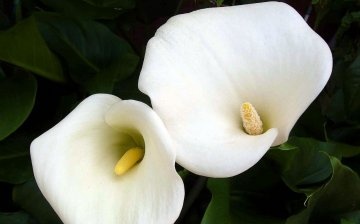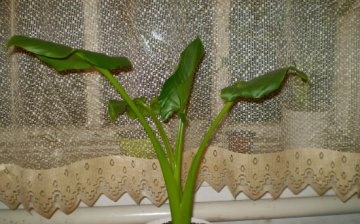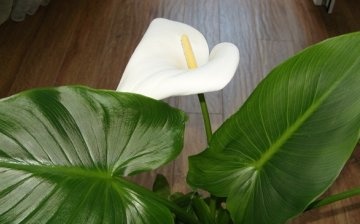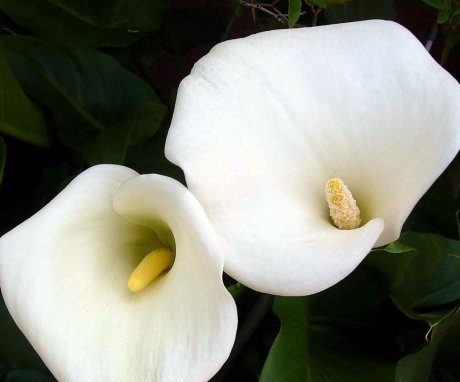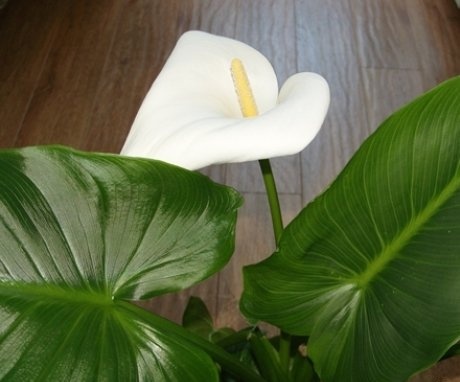Why does indoor calla not bloom?
Callas belong to the aroid family and are divided into two groups. The first includes rhizome plants derived from Ethiopian calla lilies. They have large white flowers. The second group includes tuberous varieties with variegated colors, originating from calla lilies Eliota and Remani.
White and colored calla lilies are cared for in different ways. The former prefer an increased level of humidity, therefore they need periodic spraying. They do not shed their foliage during the dormant period and love spacious planting containers. Representatives of the second group do not grow higher than 65-70 cm and completely shed their leaves when they rest.
Content:
What calla lilies look like
Callas are thick root system, which often comes to the surface of the soil. The leaves of the flower are distinguished by an oval-heart-shaped shape with a pointed tip and a single arrangement. Leaves of deep green color, glossy and fleshy, 7-15 cm long and 6-13 cm wide.
Some varieties are distinguished by white blotches on a green background.
A thick, upright stem is crowned with a candle-shaped ear formed by very small bright yellow or orange flowers. The candle is wrapped in a peduncle, like a blanket, which has the shape of a funnel. In natural calla lilies, this veil is painted white on the inside, and slightly greenish on the outside. Hybrid varieties have stipules of various bright and pastel colors.
In nature, the flowering of the plant lasts from May to August and at this moment they are very decorative. This is exactly the effect that flower growers want to achieve by planting calla lilies at home. But the flowers are quite capricious in nature and do not always fulfill the wishes of the owner.
Reasons for the lack of flowering
Blossom calla lilies start from the age of two, so do not sound the alarm if the young plant is not gaining color. But if the flower is already adult, but does not form buds, then you should understand the reason for this behavior, of which there may be several:
- Failure to comply with the conditions of the rest period. If the flower is not allowed to rest in the winter, then it refuses to bloom at all.
- The plant stops blooming if the root is not divided every two to three years.
- A pot that is too large or too small can also cause a lack of flowering.
- Shallow embedding of the tuber in the ground.
- Calla does not form buds if it feels an excess of nitrogen fertilizers, which contribute to the growth of green mass.
- Insufficient hydration.
- Improper care.
How to get a plant to bloom
The most important condition for the flowering of calla lilies is a properly organized rest period, so that the plant has time to recover and gain strength. To do this, after flowering (in autumn), you should move the flowers to a cool place, stop feeding and gradually reduce watering to nothing. In such conditions, the plants must remain for at least three months. After the aerial part dries out, the tubers are dug up, transferred to a container with dried sand and sent to a cool place.
In the spring, the tubers are treated with a manganese solution for the purpose disinfection and kept in a damp cloth. When calla lilies show signs of growth, they can be safely planted in prepared soil. The duration and abundance of flowering largely depends on the correct planting.
It should be remembered that tropical beauties prefer acidic soils, therefore it is recommended to enrich the soil with peat.
With active growth, calla lilies need abundant irrigation and the land should not be allowed to dry out. You also need to regularly make balanced feeding... In order for the plant to lay the buds, phosphorus and potassium fertilizers should be applied. "Zircon" also acts as a good stimulant of flowering.
Calla lilies should be kept at a temperature of at least 22 degrees and an air humidity of at least 80%. To ensure tropical conditions, you need to spray or place containers with water nearby. Plants should be planted every two to three years. For this, the tubers of the flower are divided, separating small children from the mother's root.
For the successful cultivation of calla lilies, a number of rules are recommended:
- select planting material correctly - tubers should be large, soft and slightly wrinkled. The larger the root, the sooner flowering will come.
- compliance with storage conditions during the rest period
- a competent choice of a landing capacity - it should be small, no more than a liter
- compliance with the landing rules. First, the tuber is buried in half and watered for several days. And when the first leaves appear, fill the ground
- leaving during flowering consists of trimming faded flowers. This stimulates the growth of tubers and ensures abundant flowering.
With proper care and all conditions for the growth and development of this decorative and vanilla-scented flower, you can achieve abundant flowering and decorate any room.
More information can be found in the video:




